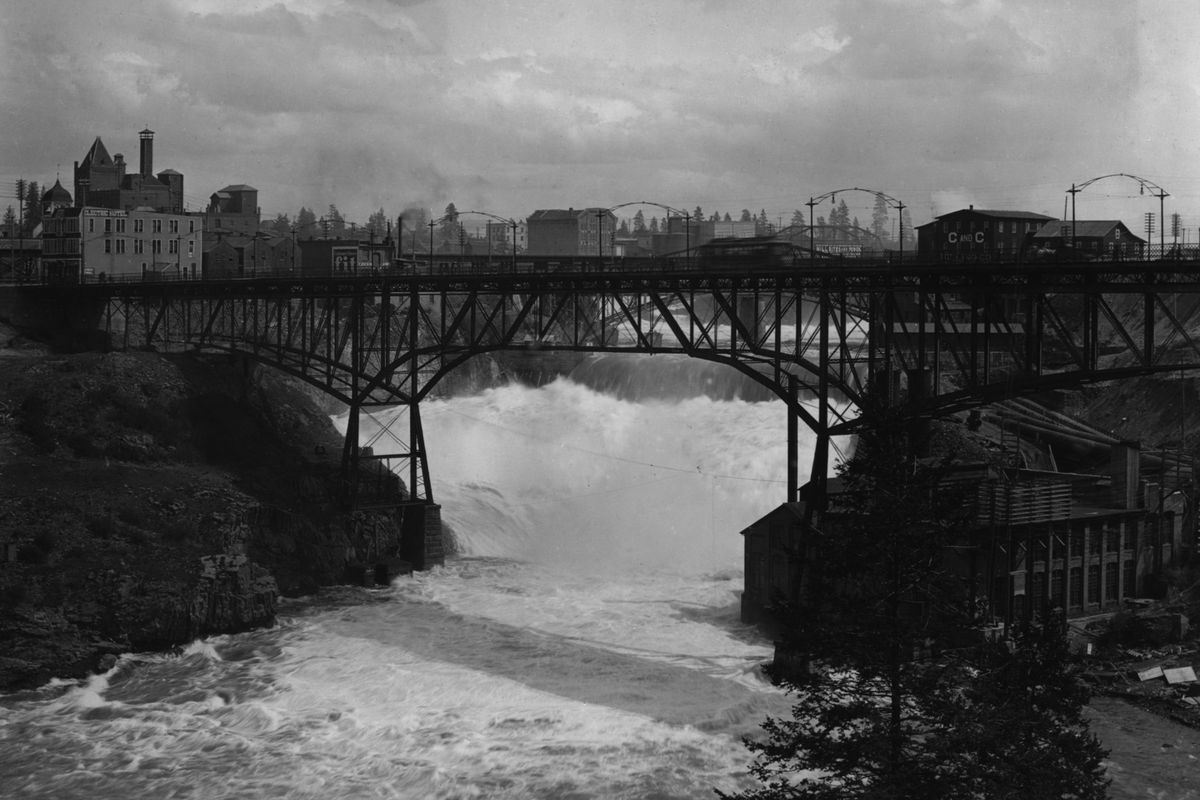Then and Now: Around the Monroe Street Bridge

Upon first glance, the biggest difference between the accompanying 1905 photo and the modern day view might be the concrete Monroe Street Bridge, opened in 1911. But major economic and technological changes can be seen as well.
At far left is the peaked roofline of the Burke-Galland brewery, opened in 1891. The brewery supplied drink to the workers rebuilding Spokane after the great 1889 fire. But competition and consolidation led them to sell to Spokane Brewing in 1902. After Prohibition, the building produced Rainier and other brands until it closed in 1963.
Consolidation and advances in technology moved brewing to smaller factories, far from the city center. The modern craft beer craze is a rebellion against the high-volume, factory beers of the 20th century.
Also shown are two flouring mills, the Spokane Flour Mill and the C&C Flour Mill. The former, still in use today as a retail and restaurant mall near the Spokane Arena, was built by businessman Simon Oppenheimer around 1895. The financial panic of 1893 forced Oppenheimer into bankruptcy, and he never saw the mill’s completion because he skipped town. The property was tied up with lawsuits until after 1900.
City founder James Glover gave millwright Frederick Post a deal on 40 acres of his newly platted city in exchange for a water-powered flour mill by the lower falls. Post completed a simple grist mill around 1878. Built nearby, the large C&C Flour Mill, which used more efficient steel rollers for grinding, began operating in 1885. It burned in 1904.
Not visible was the Echo Rolling Mill on Havermale Island. An 1888 Spokesman-Review story estimated the city’s total output at 475 barrels of flour a day. Within a few years, national demand, electric power and the opening of Asia and Europe to Palouse wheat, would cause milling to expand rapidly in Spokane, with most at facilities in East Spokane.
Washington Water Power, now called Avista Utilities, was a partnership of some of Spokane’s wealthiest business titans who would eventually own all of the land around the falls, including all the former mill sites. The historic WWP substation on Post Street sits at the former C&C Mill location.The original WWP powerhouse at the foot of the bridge was torn down in 1990 and generating equipment moved underground.
Correction: Because the C and C Mill pictured in the upper right corner of the photo is verified to have been damaged by fire in late 1904, the actual date of the old photo found in The Spokesman-Review photo archive may be earlier.